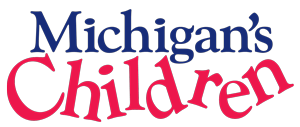Using This Election Season to Ensure Successful Transitions for Youth
The economic success of Michigan depends on getting all Michigan children ready for post-secondary education, work, and life, but too many young people aren’t succeeding through traditional high school graduation routes, and many need more time or different paths to reach a diploma. In addition, many young people, including youth who have spent time in foster care or the juvenile justice system, or those who have been homeless, face barriers to graduation that education alone cannot remove. Maintaining support through young adulthood is even more critical for young people facing these kinds of challenges, and services should be available regardless of age or geography, with access based instead on skill building and successful outcomes.
Providing Stability
Ensuring that young people who shoulder significant burdens have some stability in their lives and education, coupled with trauma-informed services and opportunities to get ahead, will result in more supportive relationships, fewer criminal justice records and better educational, career and family outcomes. Young people who have experienced foster care and are now on their own need educational, financial and legal supports and because their challenges are complex, removing barriers to services requires collaboration between the Departments that serve them.
Preparing for Postsecondary Training and Careers
It is universally accepted that some postsecondary training is essential to access family-supporting jobs. Not surprisingly, postsecondary paths are even less accessible to young people who have struggled through high school, who may be coping with trauma stemming from previous instability, and who may continue to need financial and other support to succeed. Targeted resources in K-12 that focus on identification, assessment and services for students in care, homeless students and students with disabilities are essential to help students catch up and inspire success. Flexible scheduling, smaller classes, alternative credit bearing options and multiple post-secondary pathways assist students who struggle to achieve and graduate due to their personal circumstances. Integrating services at K-12 and postsecondary options can remove barriers for learning that one system alone can’t solve. Completed IEPs for older youth and appropriate transfer to adult providers, as well as opportunities for young adults to build literacy skills, earn a GED or high school completion, and prepare for a career help with eventual work and life success.
- A Deeper Dive on the Issues and Policies that Matter
- Proven Plays for Policymakers and Champions
- Suggested Questions for Direct Candidate Engagement
- MC Toolkit
